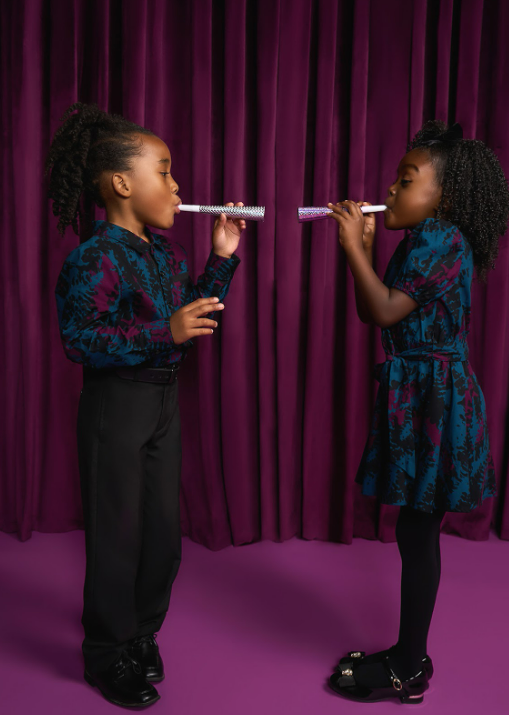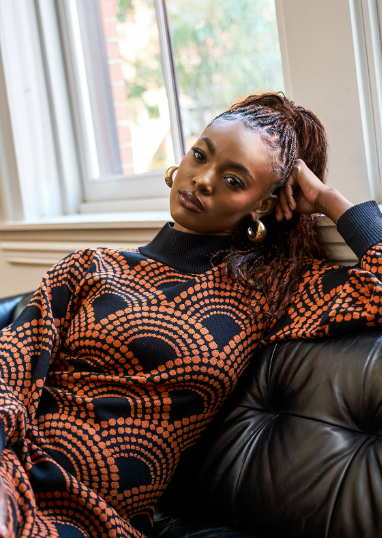The Cultural Significance of African Fashion in Holiday Celebrations Across the Globe

Liya Women's African Print Maxi Dress (Midnight Teal Abstract)
African fashion is more than just clothing; it’s a vibrant expression of culture, history, and identity.
Across the globe, African-inspired attire takes on an even deeper meaning during holiday celebrations. From family gatherings to community festivities, traditional garments and prints symbolize unity, heritage, and joy.
Whether it’s the bold patterns of Ankara, the royal elegance of Kente, or the intricate beadwork of Zulu designs, African fashion connects people to their roots while celebrating the season’s spirit.
This article explores the cultural significance of African fashion in holiday celebrations, showcasing its impact on global traditions and festive expressions.
African Fashion as a Symbol of Unity and Heritage
During holiday celebrations, African fashion serves as a powerful symbol of unity and shared heritage. Traditional attire, such as agbadas, kaftans, and boubous, are often worn by families to reflect their cultural pride and togetherness.
These garments, passed down through generations, carry stories and traditions that connect wearers to their ancestors.
For instance, in many West African countries, families wear coordinated outfits made from the same Ankara or Kente cloth during holidays like Christmas or Eid.
This tradition, known as "Aso Ebi" in Nigeria, signifies family unity and mutual support. By wearing matching or complementary outfits, families visually reinforce their bonds while honoring their cultural identity.
Globally, African diasporas also use fashion to reconnect with their roots during holiday celebrations. Whether attending Kwanzaa ceremonies in the U.S. or Christmas festivities in Europe, African-inspired attire allows individuals to celebrate their heritage with pride, bridging the gap between their ancestral culture and modern living.
The Role of African Textiles in Festive Traditions
African textiles are integral to holiday celebrations, with their vibrant colors and patterns adding energy and joy to the festivities. Each textile tells a story, often reflecting cultural values, historical events, or social status.
For example, Kente cloth from Ghana is associated with royalty and celebration, making it a popular choice for formal holiday events.
In East Africa, Kitenge fabric is widely used to create festive outfits for family gatherings and public celebrations. Known for its bold patterns and bright colors, Kitenge reflects the vibrancy of African cultures and adds a celebratory feel to any occasion.
Similarly, in Southern Africa, Shweshwe fabric is used to create elegant attire for weddings and Christmas festivities, symbolizing tradition and sophistication.
These textiles not only enhance the aesthetic of holiday celebrations but also serve as a form of storytelling. By wearing these fabrics, individuals celebrate their heritage while sharing the stories embedded in the patterns and colors, making African textiles a living part of the holiday experience.
African Fashion in Diaspora Communities During the Holidays
For Africans living abroad, holiday celebrations often become an opportunity to reconnect with their roots through fashion. In diaspora communities, traditional African attire plays a central role in bringing families and communities together, creating a shared sense of identity and belonging.
Events like Kwanzaa, celebrated widely in the United States, highlight the cultural significance of African-inspired fashion. Participants often wear dashikis, headwraps, and other traditional garments to honor African heritage.
These outfits not only celebrate cultural pride but also promote unity among attendees, reinforcing the holiday’s values of togetherness and self-determination.
In Europe, African diasporas use holidays such as Christmas and New Year’s Eve to showcase their culture through traditional clothing.
Fashion shows, cultural festivals, and family gatherings often feature Ankara dresses, Kente skirts, and other African-inspired ensembles, providing a platform for cultural expression in a foreign land. These celebrations demonstrate how African fashion transcends borders, creating a global connection to cultural heritage.

Kioko Boy's African Print Button-Up (Midnight Teal Abstract)
Modern Interpretations of African Fashion in Holiday Celebrations
While traditional garments remain central to African holiday celebrations, modern interpretations of African fashion are gaining popularity.
Designers are blending traditional fabrics with contemporary styles, creating outfits that resonate with younger generations while maintaining cultural significance.
For example, a Kente-patterned blazer paired with tailored trousers offers a sleek, modern look suitable for formal holiday events. Similarly, Ankara jumpsuits and two-piece sets have become popular choices for younger audiences, combining comfort with cultural flair. These modern designs make African fashion more relevant and accessible to a wider audience.
Accessories, too, play a role in modernizing African holiday fashion. Beaded necklaces, headwraps, and printed shoes allow individuals to incorporate cultural elements into their outfits without fully committing to traditional attire.
These adaptations make African fashion versatile, allowing it to fit seamlessly into various holiday settings while celebrating cultural identity.

Liya Women's African Print Maxi Dress (Teal Plum Tiles)
The Global Influence of African Fashion During the Holidays
African fashion influence extends beyond the continent, shaping global holiday celebrations. Designers from Africa and the diaspora have introduced traditional prints, fabrics, and styles to international audiences, making them a staple in festive wardrobes around the world.
In the United States, African-inspired designs are often incorporated into holiday collections, blending Ankara or Kente patterns with contemporary cuts to cater to diverse audiences.
Similarly, in Europe, African fashion is showcased in holiday-themed fashion shows, with models wearing bold, vibrant outfits celebrating the continent’s cultural richness.
The global popularity of African fashion has also inspired non-African individuals to incorporate these elements into their holiday attire. By wearing African-inspired clothing, they are both embracing beautful designs and participating in a broader cultural exchange, fostering appreciation and understanding.
Conclusion
African fashion is a powerful expression of culture, identity, and community, especially during the holiday season. From traditional garments that symbolize unity and heritage to modern interpretations that resonate globally, African-inspired attire adds vibrancy and meaning to festive occasions.
Whether worn by families on the continent or embraced by communities worldwide, African fashion connects people to their roots while celebrating the joy and togetherness of the holiday season. By understanding and appreciating its cultural significance, we honor the stories, traditions, and artistry that make African fashion truly extraordinary.




















Leave a comment
This site is protected by hCaptcha and the hCaptcha Privacy Policy and Terms of Service apply.